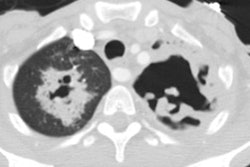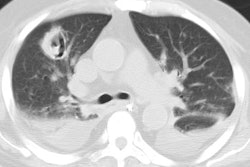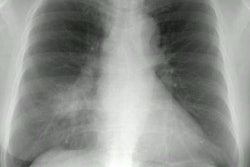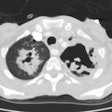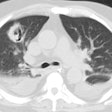Epiglotitis:
View cases of epiglotitis
Clinical:
Epiglotitis is a true medical emergency due to a bacterial
infection of the epiglotis [2].
It is most commonly secondary to H. influenza type B infection
[2], but may also occur with
pneumococci, or Grp. A Strep. Patients are generally older than
those with croup (3 to 6
years) and present with the abrupt onset of fever, stridor,
wheezing, and respiratory distress or
dysphagia [2].Typically, emergent intubation is required to
protect the airway [2].
X-ray:
The airway film will demonstrate an enlarged epiglotis ("thumb-print" sign) with thickened aryepiglotic folds. Unfortunately, radiographic findings may not be identified in all patients with endoscopically proven epiglottitis- in fact, the radiograph may be interpreted as positive in as few as 38% to 64% of patients. If there is a strong clinical suspicion for epiglottitis and the patient is in respiratory distress, radiographic evaluation is probably unwarranted and may delay treatment. Airway films should be regarded as a screening tool which should be correlated with the clinical exam [1].
Differential considerations for an enlarged epiglottis include: angioneurotic edema (will have facial swelling), thermal injury (smoke inhalation), hemorrhage (hemophilia patients), ingestion of caustic material, XRT to the neck, an omega epiglotis (a normal variant, however, the aryepiglottic folds should not be thickened), or an epithelial retention cyst (ranula- does not present acutely).
REFERENCES:
(1) Laryngoscope, Oct 1985: 1159-1160
(2) Radiographics 2015; Darras KE, et al. Imaging acute airway
obstruction in infants and children. 10: 2064-2079
